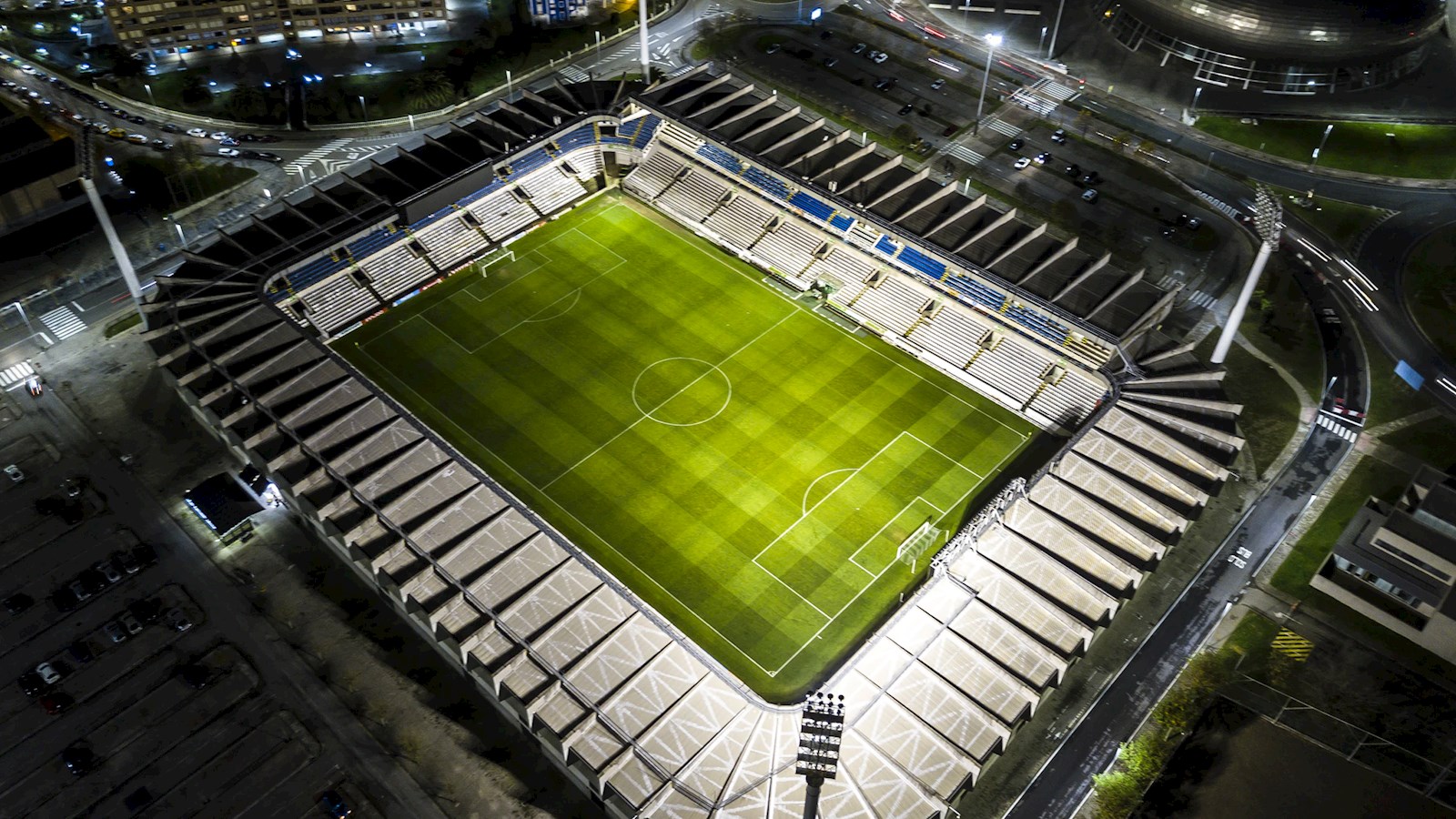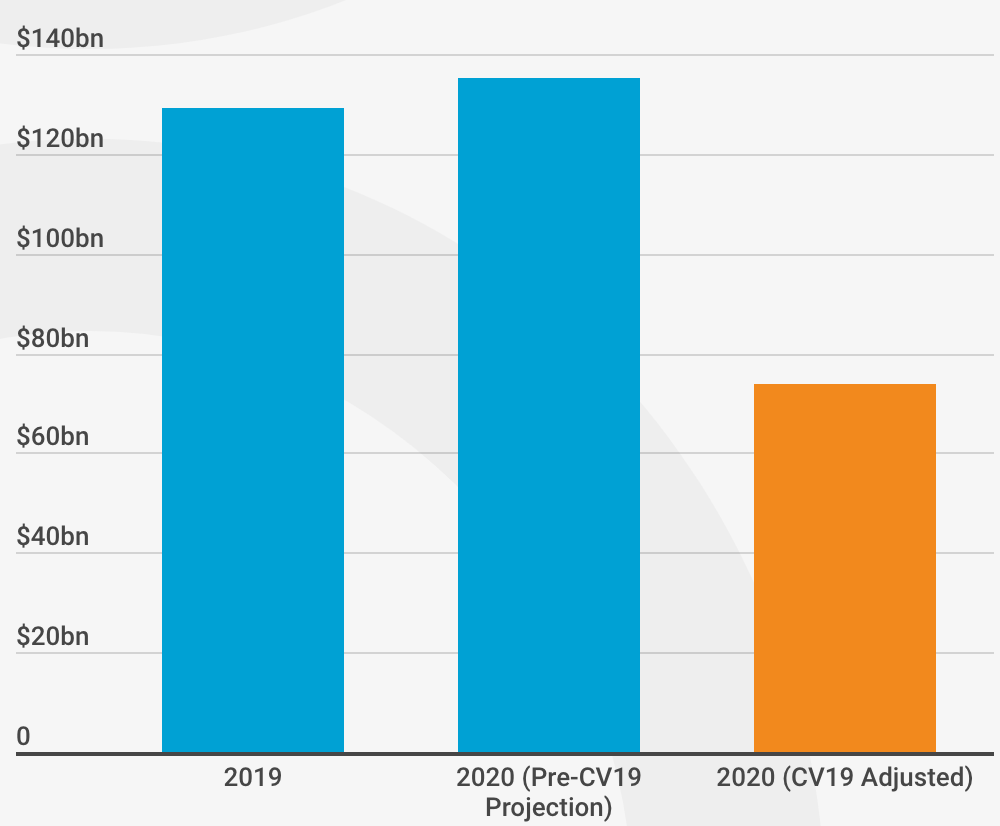
Why COVID-19 will usher in a new world order in sport
The way sport is structured and consumed was already changing, but the pandemic will accelerate this paradigm shift
At Two Circles we track the value of the sports economy, and as of 17 April 2020, projections show the global sports industry1 will generate $73.7bn this year – just over half ($61.6bn) of the pre-COVID-19 projection of $135.3bn.
Total Sports Revenue (Global)

Two Circles: projections current as of April, 2020
These numbers won’t surprise anyone working in the sports industry, and while sport is on hold, every corner of the industry will feel this significant financial strain.
But one thing we can be certain of is that the slump in the sports sector will not be as deep – nor last as long – as the global recession. Historically, the sports economy has always bounced back. And when live sport returns – either behind closed doors or with full houses – it will thrive once again, albeit with some COVID-19 financial scars, and of course, more robust insurance policies in place.
However, our analysis suggests that it won’t be a case of simply picking up where we left off at the start of March. COVID-19 will reshape the world for generations – not just healthcare systems but politics, culture and behaviours. And in the world of sport, it will accelerate a paradigm shift in how sport is structured and how it is consumed – there have been demands for structural changes for years, while consumption has been shifting slowly since the dawn of the digital age.
Growth for the biggest earners
Ultimately, this will see the sports landscape change more in the next decade than in the several decades preceding it; a change that is driven from the top through the development of a ‘new world order’. We will see the biggest events command a greater share of attention, resulting in the bigger sports properties growing and new rights-owners coming to the forefront, while smaller events are squeezed out.
The bigger properties with greater financial backing will be able to see this period through, albeit with cost-cutting measures and government support. And plans are already underway to host live sport safely in empty stadiums before the pandemic fully subsides – satisfying broadcast and sponsorship commitments and easing schedule congestion further down the line.
A scheduling battle begins
The sports calendar as we know it has developed over decades of fragile cooperation between rights-owners, resulting in a cyclical global schedule providing regular, appointment-to-view live sport.
Our data shows that the most prestigious events are underpinned by habitual, cyclical behaviours. We all know the UEFA Champions League is the zenith of the club season, followed by national team tournaments. And we know the Olympic Games and the FIFA World Cup – the two biggest global sports events – take place during the summer months, two years apart, and have done since 1948.
But COVID-19 has thrown the sports calendar into disarray. We were in a cycle of consuming sport in a certain way – and now that cycle is broken.
Some sports will lose out
It looks as if the culmination of the 2019/20 NBA season will go head-to-head with the 2020/21 MLB season – pitting the two major leagues against each other for the first time and creating a dilemma for both fans and broadcasters. And though our analysis has consistently shown there is more demand than supply in the sports fan’s universe, there will nevertheless be losers in this scheduling battle. Some sports will disappear temporarily or even permanently, unable to recover from the cancellation of live sport, while other events will be rescheduled to a date where fewer people will tune in, or won’t be rescheduled at all, if they are deemed surplus to requirements.
Opportunities for others
In the developing sporting landscape, rights-owners have an opportunity to create – and accelerate – things that were until now simply pipe dreams. Everything is on the table.
The winners in the new world order will grow or continue to grow their viewership and engagement. And they will be able to do so by making unimaginable innovations and introducing positive changes that would have otherwise taken years without the blackout.
Read the full article on twocircles.com
For more on WPPs global sports marketing capabilities, visit The WPP Sports Practice
|
published on
22 May 2020
Category
More in Communications

How to build your brand in-game
A new research report from WPP and SuperAwesome

Mechanisms that Matter – Inside our partnership with Audible
How do you take a huge client like Audible from 22 agencies to one thriving networked team?

Healthcare communications – diverse, dynamic & different
Communicating about health and healthcare in APAC requires a nuanced and balanced approach

